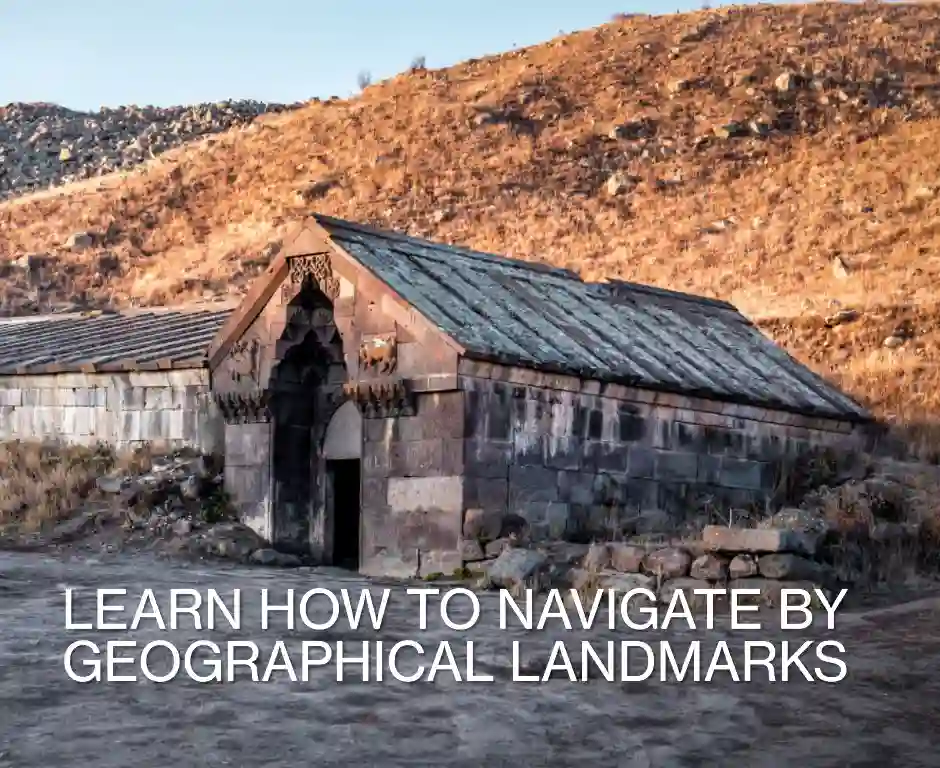Table of Contents
Some links on posts are affiliate links and will earn us a commission from qualifying purchases
Whether you are an experienced hiker or just starting out, knowing how to utilize geographical sites as landmarks can be a crucial skill in emergency situations. In this article, we will delve into the significance of geographical sites and how they can aid in identifying your position when you find yourself lost or in need of rescue.
How to Navigate with Landmarks
Navigating through unfamiliar territory can be a daunting experience, but understanding how to use geographical landmarks can make all the difference. Whether it’s spotting an old church or a landmark building on a map, these distinct features can act as guideposts to help pinpoint your current location.
By having a basic understanding of the landmarks in your surroundings, you will be better equipped to confidently navigate your way and never be lost again. Not only does this make for a more enjoyable experience when exploring new areas, but it also enhances the overall safety and security of your travels.
So, next time you find yourself setting off on a new hike, keep your eyes peeled for those distinguishable sites that will guide you on your way.
The Role of Geographical Sites
When exploring unfamiliar terrains, it is essential to pay attention to the various geographical sites and landmarks that can assist you in times of distress. These landmarks serve as more than just remnants of the past; they can be your lifeline during an emergency rescue. Let’s take a closer look at some of the different types of geographical sites that you should be aware of:
Churches: Historical Landmarks with Purpose
Did you know that old churches are more than just pretty buildings with a rich past? They also make great landmarks! Due to their sheer size and presence on the landscape, they’re easy to spot from afar. This makes them an excellent tool for navigating and finding your way around. So, next time you’re lost, keep an eye out for a historic church – it just might be your ticket to finding your way back home!
Old Outbuildings: A Testament to the Past
Abandoned or derelict outbuildings may seem insignificant at first glance, but they can be instrumental in guiding rescue teams to your whereabouts. These structures often stand out amidst natural surroundings, making them noteworthy landmarks for search parties.
Milestones: Marking Progress and Position
As you travel, watch for signs that show your progress or notable landmarks. These are vital clues for rescue teams, who can use them to focus their search and speed up the rescue process. So keep your eyes open and help increase your chances of being found quickly.
Bridlepaths: Trails of Assistance
Bridlepaths, specifically designed for horseback riding, can provide valuable insight into your location. These paths often intersect with hiking trails and can guide rescuers towards your general area, improving their efficiency in finding you.
Rivers & Streams: Natural Navigational Tools
Did you know that rivers and streams can help you find your way around and even guide rescue teams to your location? Make sure to keep an eye out for unique features like rock formations and vegetation near the water to aid in your navigation.
Unusual Rock Formations: Nature’s Signposts
Nature has a way of creating captivating rock formations that are not only visually appealing but also invaluable for navigation purposes. Memorizing distinctive rock formations along your route can greatly assist rescue operations and potentially expedite your rescue.
It is important to note that the aforementioned list is not exhaustive. Depending on the region or area you are exploring, there may be additional landmarks or geographical sites with significant relevance. To maximize your safety, always remain observant and make mental notes of any noteworthy sites you encounter along your journey.
Navigating an Emergency Situation
In the unfortunate event that you or a member of your party sustains an injury or becomes unable to make their way back, it is crucial to take immediate action while ensuring their comfort and well-being. Before seeking outside help, follow these essential steps:
- Make Them Comfortable
Create a safe and comfortable environment for the injured party. Utilize any available resources to protect them from harsh weather conditions, such as providing extra clothing or using emergency blankets. This step is essential in preventing further harm and ensuring their well-being until rescue arrives.
- Assess the Nature of the Injury
Before contacting emergency services, assess the severity and nature of the injury to the best of your abilities. This information will be vital when communicating with rescue teams, enabling them to allocate appropriate resources and respond effectively.
Leveraging Technology for Rescue
In today’s digital age, technology can be a valuable asset during emergency situations. When hiking or walking in remote areas, consider utilizing the following tools to enhance your chances of rescue:
- Mobile Telephones: A Lifeline to Help
Carrying a mobile telephone with you while exploring the outdoors can significantly increase your safety. In the event of an emergency, even weak signals can be utilized to contact emergency services. It is essential to inform them of your precise location for swift assistance.
- Global Positioning System (GPS): Precision in Rescue Operations
Modern mobile telephones are typically equipped with GPS technology, enabling emergency services to pinpoint your exact coordinates. Familiarize yourself with this feature and provide accurate location information to expedite rescue operations, especially in challenging or remote terrains.
- Communicating with Rescue Teams
While contacting emergency services, convey any pertinent information about the terrain, encountered hazards, or distinctive landmarks. This will enable rescue teams to better understand your situation, aid navigation, and speed up the rescue process.
Maintaining Composure for Optimal Results
In any emergency situation, it is crucial to remain calm and composed. Panic can lead to further injuries or the provision of inaccurate information, potentially impeding rescue efforts. By keeping a level head, you can help both yourself and the injured party navigate through the crisis more effectively.
As such, it is important to learn how to respond in an emergency situation. Learning first aid skills and having up-to-date knowledge of safety protocols can help you become better prepared for any medical or safety emergency.
Even if you don’t have a background in medicine, knowing basic techniques like CPR or the Heimlich maneuver can be the difference between life and death. Taking a first aid course is one of the best ways to ensure you are well-equipped to handle any situation.
Additionally, maintaining an emergency phone number list and having access to a first aid kit are essential for emergency situations.
Essential Equipment and Preparations
When planning a hiking or walking trip, it is vital to have the appropriate equipment and preparations to ensure your safety. While it is crucial not to overload yourself with unnecessary gear, the following items are essential for emergencies:
- Adequate food and water supplies to sustain you and your party until rescue arrives.
- Sufficient warm clothing and blankets to protect against inclement weather.
- A reliable light source, such as a flashlight or headlamp, to aid visibility during nighttime or low-light conditions.
- Navigation tools, including a compass and a detailed map of the area you are exploring.
- Personal protective equipment, such as a first aid kit, to address minor injuries promptly.
By striking the right balance between preparedness and carrying essential items, you can mitigate potential risks and ensure your well-being during unexpected situations.
Conclusion
When it comes to outdoor exploration, knowledge is your greatest asset. By familiarizing yourself with the geographical sites and landmarks along your hiking or walking routes, you can enhance your safety and potentially expedite rescue efforts in times of emergency. Remember to remain observant, use available technology wisely, and maintain composure to optimize your chances of a successful rescue. Prioritize safety, prepare diligently, and enjoy your outdoor adventures with confidence, knowing you are equipped to handle any unexpected circumstances that may arise. Stay safe and happy hiking!
Recent Posts
Get Your Bearings - Master the Basics of Compass Navigation Today
Are you looking to venture into the wilderness but fear getting lost in the vast expanse? You need to master the art of navigation using a compass and map. Though it may seem underappreciated in the...
Walking Britain's Disused Railway Lines - And Where Can You Find Them
If you want a nice peaceful walk, why not turn back the years and explore some of Britain's lost railway lines


